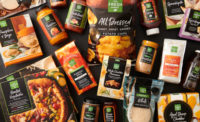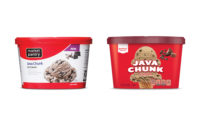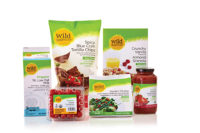Private brand packaging is in a state of constant evolution. It must continuously evolve to remain competitive within dynamic categories to reflect strategic redesign or refreshes and to communicate updated product-specific information. And now, new regulatory requirements mandate additional packaging updates. These regulatory shifts in packaging have become more common for a variety of reasons, including to provide greater transparency to consumers and to reflect new thinking and scientific research.
However, two regulatory shifts in particular are impacting private brands today—Nutrition Facts Panel updates, with a compliance date of Jan. 1, 2020 for manufacturers with more than $10 million in annual sales and Jan. 1, 2021 for those with less than $10 million in annual sales, as well as the National Bioengineered Food Disclosure Standard, with a mandatory compliance date of Jan. 1, 2022.
Both rulings require updates or disclosures on the packaging of affected products. Sweeping changes like these can impact a significant portion of a private brand program. This could potentially affect thousands of items across a single retail portfolio and requires intensive time and effort to effectively manage the transition of new packaging onto the shelf. Set deadlines can be particularly challenging to some categories, like frozen fruit and vegetables, where manufacturers need to manage short harvest windows with the inventory needs of an entire selling season.
In the case of the Nutrition Facts Panel updates, the primary compliance deadline is already upon us. Many retailers and suppliers are still scrambling to complete the necessary updates and transition their inventory. The delay in compliance is not due to lack of interest and willingness to comply. Rather, it is due to resource bottlenecks, competing business priorities and the desire to avoid incurring incremental design costs until absolutely necessary.
The FDA recently acknowledged receipt of multiple requests from manufacturers to provide additional time to comply with the new requirements. And, although the FDA confirmed the deadline stands, it indicated that it plans to “work cooperatively with manufacturers to meet the new Nutrition Facts label requirements and will not focus on enforcement actions regarding these requirements” during the first six months following the Jan. 1, 2020 deadline—a welcome show of partnership. However, the respite is somewhat short lived, as focus soon needs to shift from Nutrition Facts Panel compliance to the Bioengineered Food Disclosure requirements.
But, how do companies keep up with the pace of regulatory updates without adding undue cost, time or bottlenecks to the business?
A clearly defined, systematic approach will help manufacturers and retailers stay ahead of the changes, minimizing cost to the business and maximizing the positive impact to consumers. The industry can accomplish this by taking the following steps:
- Act quickly. Once a regulation is finalized and announced, move quickly. Research shows that 30% of private brand items in center store require at least six months to work through a standard minimum packaging run. Working too closely to the deadline increases the likelihood that a retailer will require minimum packaging print runs that get them past the packaging deadline, but exceed their production needs. This not only generates waste due to destroyed inventory, but minimum runs negate production and cost efficiencies gleaned from larger runs. Working ahead of the deadline avoids these costs and potential bottlenecks with print and production capacity.
- Define the internal approach. Engage your packaging partner to create execution rules and guidance that best fit your brand strategy and shopper. Then, define an internal execution priority that aligns with existing business plans, supplier transitions, new item launches, re-set schedules and promotional considerations. Having the right agency partner is important. The right agency can quickly and efficiently execute design updates, juggle shifting priorities, as well as help manage inventory levels to minimize waste during the transition.
- Communicate the plan to internal and external partners. Multiple parties are affected by these changes, including design agencies, category teams, quality assurance, regulatory, pre-press houses, supply chain and printers. Communicating your plan ensures all teams understand the priority and implications of their decisions, and allows a long runway to begin a controlled transition that culls down existing inventory in anticipation of the new stock.
- Be opportunistic. Take advantage of this opportunity to combine required changes with other updates that will strengthen how the packaging or product resonates with the consumer. These changes may include incorporation of design trends, updating packaging to reflect a reformulation or new claim, adapting to new category, consumer or competitive shifts or an overall design refresh – all of which can drive improved consumer engagement and incremental sales. You are updating your packaging anyway, so why not use the opportunity to connect with shoppers in a fresh way?
The time to act is now. With forward planning, effective communication and the right partners, responding to regulatory updates can fit within your existing business plan, thus achieving compliance in conjunction with new item launches, reformulations, redesigns, packaging updates and other competing priorities within the business plan. Beyond simple compliance, maintaining an opportunistic mindset can mold these changes into an opportunity to strengthen packaging.






